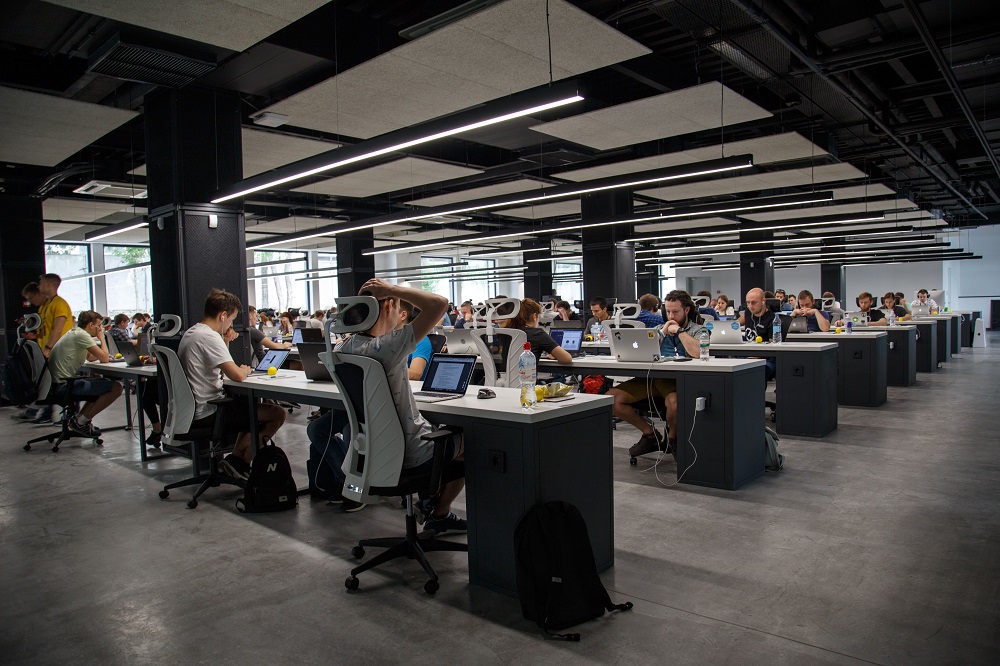For an organization's continued success and growth and success, cultivating a culture of curiosity and innovation is the key. Integrating these values into the very core of company culture will help empower employees to bring new ideas to the table, thereby creating new potential for breakthrough results.
While many leaders understand the gravity of fostering these ideals, many are still not sure of how to encourage their teams. And it all boils down to one question - how can enterprises encourage a culture that helps institutionalize curiosity?
Let's explore the different strategies leaders can employ to cultivate a more curious and innovative culture within the organization.

Fostering a Culture of Curiosity and Innovation
-
Demonstrating New Technologies and Contribution Modalities
It is important for industry leaders to demonstrate innovative ideas on what is possible. By using new technologies and frameworks, they can actually create curiosity and innovation in their employees, thereby initiating inspiring conversations. They need to inculcate an approach of guidance and support and not just show and tell. By incorporating several different approaches and implementing them into actions, leaders can give their employees a safe playground that supports different preferences and contributions.
Read more: The Growing Significance of Technology as a Sustainable Business Asset
For example, with AI, leaders can align teams on what needs to be implemented to deliver the targeted ROI and foster a more curious and innovative culture. These can involve anonymous feedback, innovation discussions during team meetings, idea-generation sessions for setting employee goals, or even a contest to determine who could generate the best idea.

-
Creating a Space that Nurtures Conversations into Action
The most important initiative for any industry is to create a work environment for the employees to share ideas and initiate courageous conversations. This space should help in creating a feeling of psychological safety for the people to feel comfortable and valued. It enables them to discuss opposing or controversial points of view. They can set the intention of voicing out their opinions on what they find interesting.
A culture of high-trust cultures promotes self-determination at work, enabling innovation to flourish. Employees feel they are able to undertake tasks easily with the freedom to problem-solve and support the organizations. By creating a system, the employees will be able to contribute ideas and hold transparent, conversational metrics to evaluate those ideas. This will help develop a mechanism to reward good ideas, thereby strengthening the innovative culture. One way forward to promote such culture is to bring together groups and guide them to work closely together on one another's business issues in a productive and enjoyable way.
.jpg)
-
Cultivating A Psychologically Safe Environment
Industry leaders need to understand the need to create a psychologically safe work environment within the organization. It is the key to fostering a culture where the employees feel free to speak up and voice their ideas. It also encourages them to ask questions and initiate a creative conversation that aids curious minds. Organizational leaders can build a psychologically safe environment by practicing empathy, avoiding a blame culture, and creating an inclusive decision-making approach.
Read more: Why Investing in Employees Enables Better Business Results?
-
Displaying Commitment to Curiosity by Incentivizing Innovative Solutions
Leaders must demonstrate curiosity and innovation through their actions to cultivate a curious and innovative team. Teams follow their leaders. When they witness a culture that welcomes challenging and asking probing questions, the employees are likely to feel the motivation to contribute. Innovative teams with innovative leaders can together contribute to creating a curious culture. Nurturing innovation within an organization is often faster and easier when the leaders start incorporating changes in how they undertake every operation and foster critical ideas. With leaders identifying this vital role of innovation, companies are adding KPIs, bonuses, and additional benefits for their employees to review and change their existing strategies. This is helping to cultivate a culture of constant innovation. It offers leaders opportunities to imply innovative risk-taking and support a culture of learning from failures.
.jpg)
-
Making Space for New Exploration
Given that businesses operate in a highly uncertain environment today, it is not easy to predict the kind of knowledge or understanding that will be beneficial in the future. With this idea in mind, businesses should create and encourage their employees to be curious. However, it is important to distinguish between curiosity and creativity. While curiosity focuses on the process of learning and discovering, it does not necessarily turn those learnings into action.
It is time for organizations to make space for a specific amount of new exploration. When they explore, they will be able to learn and build their understanding of the world around them.
Industry leaders are responsible for fostering a culture that is rich in experimentation. Today, they should embrace that same kind of curiosity and try and test endless possibilities by constantly running experiments on their people to build an inclusive work environment.
Read more: The Next Tech Time Warp: How Will Artificial Intelligence Possibly Change the World?
-
Involving Teams in Decision Making
Creating a workplace culture that fosters an innovative mindset is particularly effective in the business world of today.

A culture that encourages employees to develop and share innovative ideas is a wonderful way to keep the company competitive. The best ideas within an organization do not necessarily have to be from the top management. A Harvard Business Review stated that fostering curiosity offers a wide range of benefits for an organization, its leaders, as well as employees. By devising ways to keep employees' part of the conversations, leaders can create a culture that nurtures innovative ideas, thus leading to business wins. Asking more questions from the team and getting them involved in decision-making will help solicit feedback and ideas. This involves-
-
Less decision-making errors
-
More innovation and positive changes
-
Reduced conflict.
-
More open communication
-
Hosting a Townhall or a Question Hall
Leaders can host organizational town halls or question hall meetings. The agenda for the meetings could be that the leadership comes with questions to ask their employees to naturally uncover solutions. Here it is significant to identify the correlation between curiosity and leadership. While curiosity can often be taken for granted, it is extremely important to strategically plan action frameworks that foster curious minds. Today cultivating an innovative mindset is about challenging the existing norm and devising exceptional ideas. Leaders can explore ideas on ways that can be integrated into the existing operational framework. This will help foster healthy conversations around different perspectives.
Read more: Debunking the Myths - Does Innovation Holds Back Digital Transformation?

To Sum Up
One question that often arises is - do organizations kill curiosity waiting for their employees?
Research by the Global curiosity institute highlights that leaders are twice as ready to say their organization supports curiosity in comparison to the people who report to them. However, studies have shown that after three years in the same role, the curiosity of an employee reduces. And middle-level managers are four times less positive about curiosity compared to their team leads or senior executives.
Within an organization, while not everyone may not be good at being creative, with the right guidance, they are likely to get better. And the way to improve is through feedback and cultivating an inclusive environment that targets constant improvement and agile development.
With agile practices, the employees can take the first step to enhance the product or idea under consideration. Agile practices also incorporate feedback designed to help enhance the process. By responsibly managing the tasks and learning, leaders can foster a work environment that not only celebrates the results. It also offers a way to systematically adapt to the curiosity and creativity of its employees.
With a presence in New York, San Francisco, Austin, Seattle, Toronto, London, Zurich, Pune, Bengaluru, and Hyderabad, SG Analytics, a pioneer in Research and Analytics, offers tailor-made services to enterprises worldwide.
A leader in Market Research services, SG Analytics enables organizations to achieve actionable insights into products, technology, customers, competition, and the marketplace to make insight-driven decisions. Contact us today if you are an enterprise looking to make critical data-driven decisions to prompt accelerated growth and breakthrough performance.









